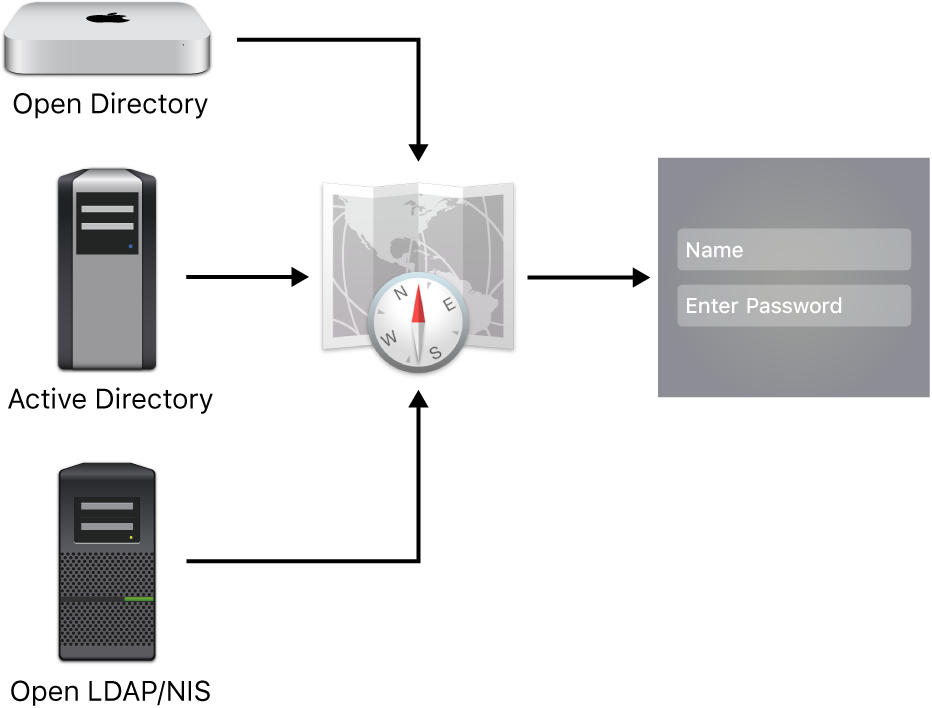
About Directory Utility
You use Directory Utility to add and configure advanced connections to directory servers. Your Mac accesses directory servers for user information and other administrative data stored in the directory domain of directory servers. Your Mac can connect to an Open Directory, Active Directory, LDAP directory server, or NIS domain.

When you add a directory server to (or delete one from) the Services list in Directory Utility, connection settings associated with that directory server are added to (or deleted from) the Authentication and Contacts lists. However, if you remove the associated connection settings from the Authentication and Contacts lists, the directory server is not removed from the Services list.
You can use the advanced features of Directory Utility to configure records, services, and search policies, and to configure a remote Mac that has macOS Server installed.
The following are advanced features of Directory Utility:
Services: Configures a connection to directory servers (Open Directory, Active Directory, LDAP, or NIS) that users can access.
Search Policy: Configures where the Mac searches for user authentication and contact information.
Connect: Configures remote Mac computers with macOS Server installed.
Directory Editor: Configures record types and attributes in an authenticated directory domain or local directory.
Access an Open Directory domain
Configure a Mac to access a specific Open Directory domain. For more information, see Manage Open Directory access.
Access an Active Directory domain
Configure a Mac with macOS or macOS Server installed to access an Active Directory domain on a Windows 2000 or later server. For more information, see Configure domain access. For advanced Active Directory binding information, see the Active Directory integration section of the macOS Deployment Reference.
Access LDAP directories
Configure a Mac with macOS or macOS Server installed to access specific LDAP directories. For more information, see Configure LDAP directory access and Configure access to an LDAP directory manually.
Access an NIS domain
Create a configuration that specifies how a Mac with macOS or macOS Server installed accesses an NIS domain. For more information, see Specify NIS settings.